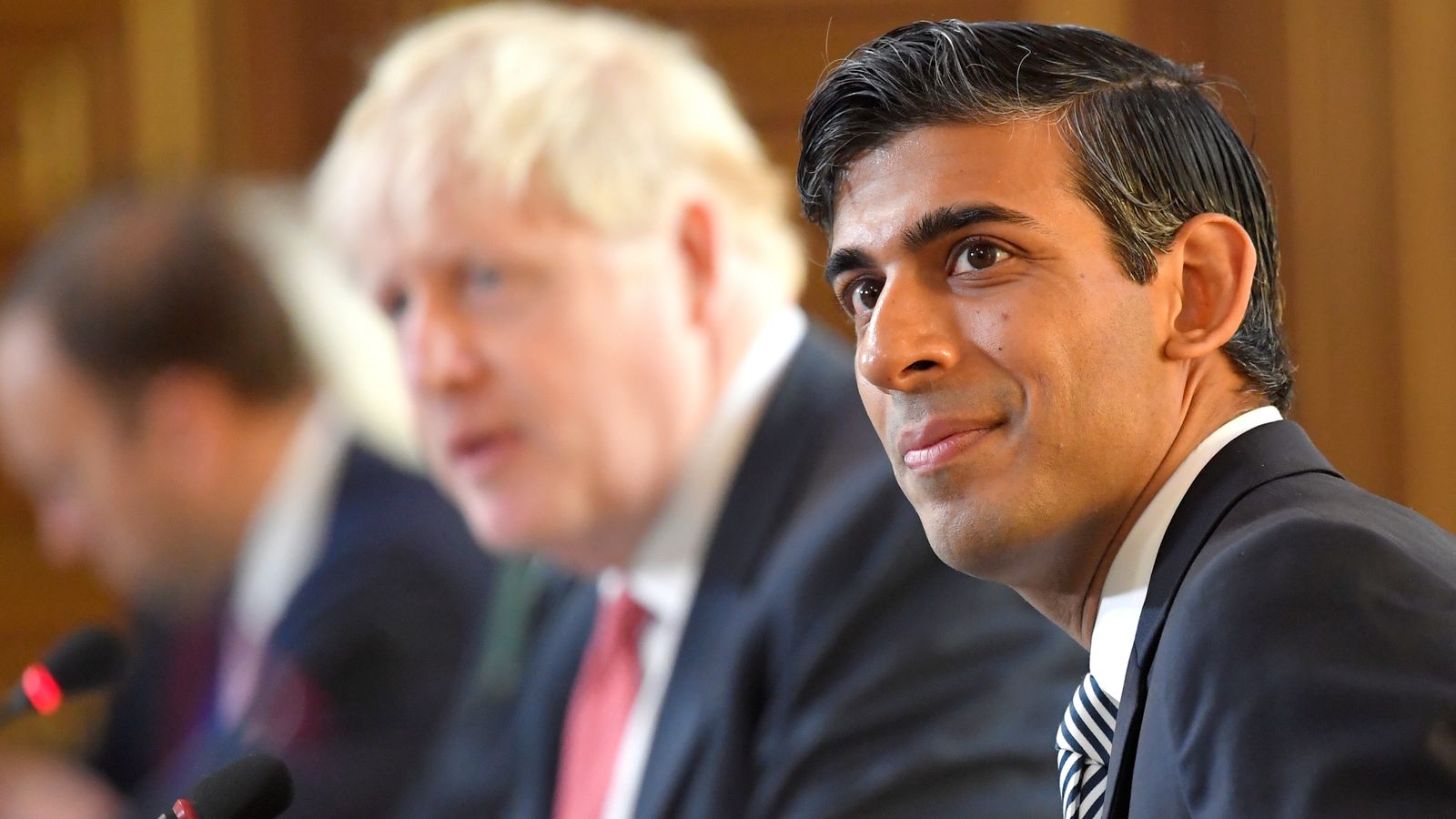Rishi Sunak has hailed the “extraordinary success” of the furlough scheme as official figures suggest a “small” number of jobs were lost at its demise.
The Office for National Statistics (ONS) reported a rise of 160,000 in payrolled employment between September and October.
Treasury data had shown there were 1.14 million jobs on furlough when the scheme ended on 30 September.
The Coronavirus Job Retention Scheme, as it was officially called, had supported the wages of more than 11.7 million people since 1 March 2020 at a cost of more than £70bn as the COVID-19 pandemic forced large parts of the economy into hibernation.
Headline indicators for the UK labour market for July to September 2021 show
▪️ employment was 75.4%
▪️ unemployment was 4.3%
▪️ economic inactivity was 21.1%
➡️ https://t.co/3PCfjAr63F pic.twitter.com/BadsnbfY8O
Bank of England governor Andrew Bailey told MPs on Monday that it Bank had held off raising interest rates this month to help combat rising inflation because policymakers had wanted to see how the jobs market had responded to the end of the furlough scheme.
The ONS said it could take a few months to fully emerge because of notice periods but the early evidence suggested the numbers made redundant were “small”.
The number of payrolled employees – those on PAYE (Pay As You Earn) – was up by 0.8% since February 2020.
Bank of England chief: I’m uneasy about inflation but we are a long way from the 1970s
HS2: Northern newspapers unite as part of backlash against Boris Johnson’s scaling back of rail projects
Dutch government only has itself to blame for Shell move to UK
That was a rise of 235,000 on pre-pandemic levels.
Sam Beckett, ONS head of economic statistics, said: “October’s early estimate shows the number of people on the payroll rose strongly on the month and stands well above its pre-pandemic level.”
She added: “There is also no sign of an upturn in redundancies and businesses tell us that only a very small proportion of their previously furloughed staff have been laid off.”
There was no improvement, however, in the labour shortage crisis that has damaged the supply chain as vacancies hit a new record high, with evidence of 1.3 million vacancies last month.
The unemployment rate fell to 4.3% in the three months to September from 4.5% – a deeper fall than economists had expected.
Chancellor Rishi Sunak, who had been urged by critics including unions and some business groups to extend furlough, said of the ONS data: “Today’s numbers are testament to the extraordinary success of the furlough scheme and welcome evidence that our Plan for Jobs has worked.
“We know how vital keeping people in good jobs is, both for them and for our economy – which is why it’s fantastic to see the unemployment rate falling for 9 months in a row and record numbers of people moving into employment.
“Our Plan for Jobs is at the heart of our vision for a stronger economy for the British people, with schemes like Kickstart and Sector Based Work Academies continuing to create opportunities for people up and down the country.”
Head of economics at the British Chambers of Commerce, Suren Thiru, said: “Record job vacancies suggest that the chronic staff shortages encountered by businesses are intensifying and this could derail the recovery by forcing firms into a more long-lasting decline in their operating capacity.
“Although earnings growth remains elevated, achieving wage increases over a sustained period may prove challenging without a marked improvement in productivity and an easing of the cost pressures faced by firms.
“Despite the success of furlough, the likely squeeze on hiring intentions from next year’s national insurance hike and more sluggish growth could mean that labour market conditions start to weaken over the medium term.
“More significant support is needed to help firms access the skills they need when they can’t recruit locally, including supporting the hardest hit sectors through expansion of the Shortage Occupation List.”






















